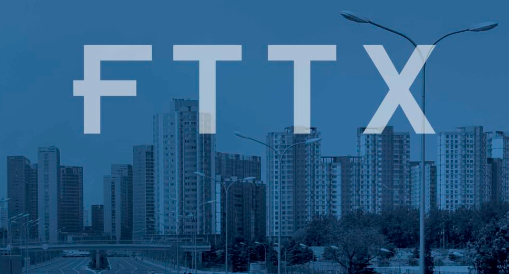
WHAT IS FIBER-TO-THE-x (FTTx)?
FTTx is a generic term used to refer to various types of broadband networks making use of fiber optic cables to deliver communications signals to subscribers at high speeds. These fiber optic cables are able to deliver more data across greater distances than traditional copper wires. Below, we’ll delve into some of the most common types of FTTx:
Fiber-to-the-home
Fiber-to-the-home (FTTH) involves the use of optical fiber to deliver a signal from operator’s equipment to an individual home or unit, greatly increasing connection speeds for broadband networks. Single-Family Units (SFUs), MDUs, and businesses can all benefit from FTTH, as internet, voice, and video services are able to operate with much higher speeds and efficiency.
Fiber-to-the-building
FTTB (fiber-to-the-building or basement) uses fiber cable to deliver communications signals to a central area in shared working or living properties. Other types of cabling, such as twisted pair, wireless, or coaxial, are then used to convey the signal to the individual SFUs, offices, or other spaces within the shared property.
Fiber-to-the-premises
The term FTTP (fiber-to-the-premises) is used as a general way to refer to high-speed connectivity optical fiber run into a subscriber’s home from a central location. FTTP can be used to reference either FTTH or FTTB fiber optic connections.
Fiber-to-the-node
FTTN (fiber-to-the-node or neighborhood) makes use of a fiber cable carrying a shared connection to a common network box, or cabinet, in order to serve an entire neighborhood. This may be used to reach hundreds of different customers, usually within a mile radius, who then individually connect to the cabinet with other types of cabling, such as twisted pair wiring.
Fiber-to-the-curb
FTTC (fiber-to-the-curb or cabinet) refers to the process in which an optical fiber cable is installed directly at the “curb” — a general term that can be used to refer to any common platform, such as a communications shed — to reach multiple subscribers. The signal generally stops within 1,000 feet of each individual customer. FTTC provides faster broadband speeds than telephone lines can.
Fiber-to-the-telecom enclosure
FTTE (fiber-to-the-telecom enclosure), sometimes called fiber-to-the-zone (FTTZ), is a standards-compliant, extremely cost-effective cabling method used in common spaces; long link lengths of fiber cable are extended from main equipment rooms (ER) to telecommunications rooms (TR) without the need for splices.
Fiber-to-the-distribution point
Similar to FTTC and FTTN, FTTdp (fiber-to-the-distribution point) delivers fiber to a distribution point in a specified area and then uses existing copper connections to serve individual units without actually entering them. This allows for a much more cost-efficient solution than FTTP methods.
Fiber-to-the-antenna
Describes the process of using fiber to feed wireless services, such as various cellular distributions devices. As wireless speeds increase, fiber is increasingly needed to provide the bandwidth necessary for these devices.